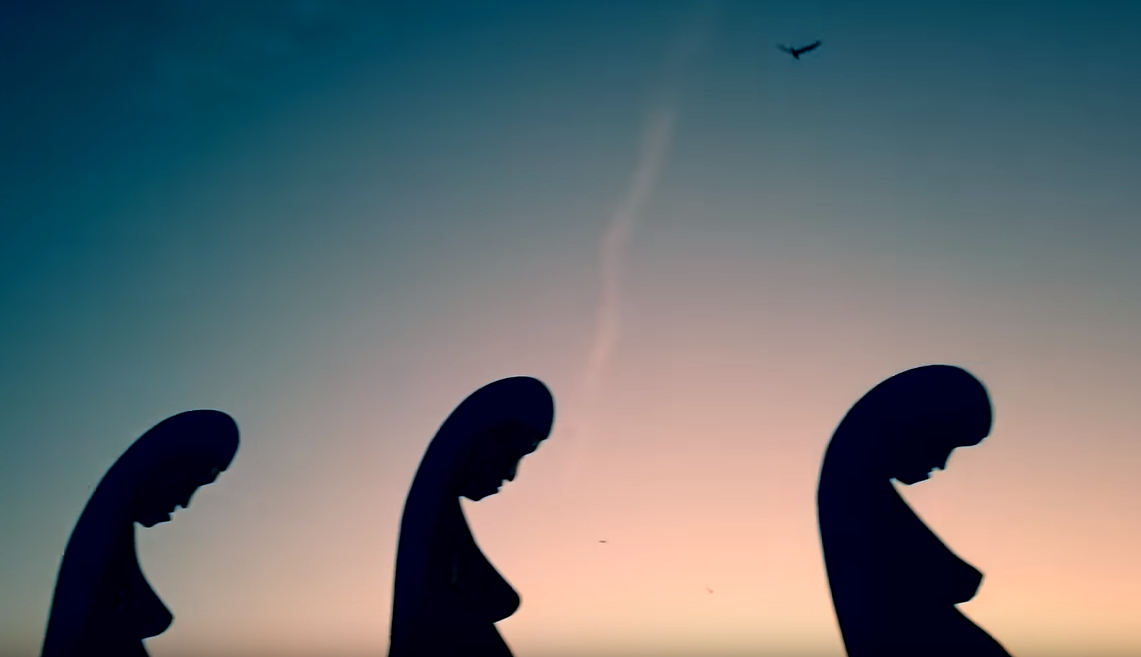Friday, December 16, 2005
Religious Meaning of "The 12 Days of Christmas."
"The 12 Days of Christmas"
~ Origins and Religious Meaning ~
Caveat: I've discovered that there is a controversy disputing the authenticity of this interpretation, just to inform you. There are some who have labeled this an "urban legend."
Also: I heard this on a Christian radio station today, so I do not deem it only a "Catholic" religious message. It is inherently Christian and does not add any false doctrine (as far as I can see) to Biblical Christian faith.
Note: The concepts symbolized in "The Twelve Days of Christmas," are not just considered Catholic, because these were basic articles of faith common to all denominations of Christianity.
*******
Background:
Catholics in England during the period 1558 to 1829 were prohibited by law to practice their faith either in public or private. It was illegal to be Catholic until Parliament finally emancipated Catholics in England in 1829.
"The Twelve Days of Christmas" was written in England as one of the "catechism songs" to help young Catholics learn the basics of their faith. In short, it was a coded-message, a memory aid. Since the song sounded like rhyming nonsense, young Catholics could sing the song without fear of imprisonment. The authorities would not know that it was a religious song.
"The 12 Days of Christmas" is in a sense an allegory. Each of the items in the song represents something significant to the teachings of the Catholic faith. The hidden meaning of each gift was designed to help Catholic children learn their faith. The better acquainted one is with the Bible, the more these interpretations have significance.
The song goes, "On the first day of Christmas my true love gave to me…"
The "true love" mentioned in the song doesn’t refer to an earthly suitor, but it refers to God Himself. The "me" who receives the presents refers to every baptized person. i.e. the Church.
1st Day:
The partridge in a pear tree is Christ Jesus upon the Cross. In the song, Christ is symbolically presented as a mother partridge because she would feign injury to decoy a predator away from her nestlings. She was even willing to die for them. The tree is the symbol of the fall of the human race through the sin of Adam and Eve. It is also the symbol of its redemption by Jesus Christ on the tree of the Cross.
2nd Day:
The "two turtle doves" refers to the Old and New Testaments.
3rd Day:
The "three French hens" stand for faith, hope and love—the three gifts of the Spirit that abide (1 Corinthians 13).
4th Day:
The "four calling birds" refers to the four evangelists who wrote the Gospels—Matthew, Mark, Luke and John—which sing the song of salvation through Jesus Christ.
5th Day:
The "five golden rings" represents the first five books of the Bible, also called the Jewish Torah: Genesis, Exodus, Leviticus, Numbers and Deuteronomy.
6th Day:
The "six geese a-laying" is the six days of creation.
7th Day:
The "seven swans a-swimming" refers to the seven gifts of the Holy Spirit: wisdom, understanding, counsel, fortitude, knowledge, piety and fear of the Lord
.
8th Day:
The "eight maids a milking " reminded children of the eight beatitudes listed in the Sermon on the Mount.
9th Day:
The "nine ladies dancing" were the nine fruits of the Holy Spirit found in Galatians 5:22-23: love, joy, peace, patience, kindness, goodness, faithfulness, gentleness and self control.
10th Day:
The "ten lords a-leaping" represents the Ten Commandments
11th Day:
The "eleven pipers piping" refers to the eleven faithful apostles.
12th Day:
The ‘twelve drummers drumming" were the twelve points of belief expressed in the Apostles’ Creed: belief in God the Father, the Son and the Holy Spirit, that Jesus Christ was born of the Virgin Mary, made man, crucified, died and arose on the third day, that he sits at the right hand of the father and will come again, the resurrection of the dead and life everlasting.
So the next time you hear "the Twelve Days of Christmas" consider how this otherwise non-religious sounding song had its origins in keeping alive the teaching of the Catholic faith.
Adapted from email messages,from "How To Decode the Twelve Days of Christmas,"by Hugh D. McKellar,U.S. Catholic, 12/1979, and from "‘12 Days of Christmas’ is no nonsense, but a serious riddle" by David Crowder, El Paso Times, 12/19/1993.
Also, Origin of "The Twelve Days of Christmas"An Underground Catechism by Fr. Hal Stockert 12/17/95 http://www.cin.org/twelvday.html
~ Origins and Religious Meaning ~
Caveat: I've discovered that there is a controversy disputing the authenticity of this interpretation, just to inform you. There are some who have labeled this an "urban legend."
Also: I heard this on a Christian radio station today, so I do not deem it only a "Catholic" religious message. It is inherently Christian and does not add any false doctrine (as far as I can see) to Biblical Christian faith.
Note: The concepts symbolized in "The Twelve Days of Christmas," are not just considered Catholic, because these were basic articles of faith common to all denominations of Christianity.
*******
Background:
Catholics in England during the period 1558 to 1829 were prohibited by law to practice their faith either in public or private. It was illegal to be Catholic until Parliament finally emancipated Catholics in England in 1829.
"The Twelve Days of Christmas" was written in England as one of the "catechism songs" to help young Catholics learn the basics of their faith. In short, it was a coded-message, a memory aid. Since the song sounded like rhyming nonsense, young Catholics could sing the song without fear of imprisonment. The authorities would not know that it was a religious song.
"The 12 Days of Christmas" is in a sense an allegory. Each of the items in the song represents something significant to the teachings of the Catholic faith. The hidden meaning of each gift was designed to help Catholic children learn their faith. The better acquainted one is with the Bible, the more these interpretations have significance.
The song goes, "On the first day of Christmas my true love gave to me…"
The "true love" mentioned in the song doesn’t refer to an earthly suitor, but it refers to God Himself. The "me" who receives the presents refers to every baptized person. i.e. the Church.
1st Day:
The partridge in a pear tree is Christ Jesus upon the Cross. In the song, Christ is symbolically presented as a mother partridge because she would feign injury to decoy a predator away from her nestlings. She was even willing to die for them. The tree is the symbol of the fall of the human race through the sin of Adam and Eve. It is also the symbol of its redemption by Jesus Christ on the tree of the Cross.
2nd Day:
The "two turtle doves" refers to the Old and New Testaments.
3rd Day:
The "three French hens" stand for faith, hope and love—the three gifts of the Spirit that abide (1 Corinthians 13).
4th Day:
The "four calling birds" refers to the four evangelists who wrote the Gospels—Matthew, Mark, Luke and John—which sing the song of salvation through Jesus Christ.
5th Day:
The "five golden rings" represents the first five books of the Bible, also called the Jewish Torah: Genesis, Exodus, Leviticus, Numbers and Deuteronomy.
6th Day:
The "six geese a-laying" is the six days of creation.
7th Day:
The "seven swans a-swimming" refers to the seven gifts of the Holy Spirit: wisdom, understanding, counsel, fortitude, knowledge, piety and fear of the Lord
.
8th Day:
The "eight maids a milking " reminded children of the eight beatitudes listed in the Sermon on the Mount.
9th Day:
The "nine ladies dancing" were the nine fruits of the Holy Spirit found in Galatians 5:22-23: love, joy, peace, patience, kindness, goodness, faithfulness, gentleness and self control.
10th Day:
The "ten lords a-leaping" represents the Ten Commandments
11th Day:
The "eleven pipers piping" refers to the eleven faithful apostles.
12th Day:
The ‘twelve drummers drumming" were the twelve points of belief expressed in the Apostles’ Creed: belief in God the Father, the Son and the Holy Spirit, that Jesus Christ was born of the Virgin Mary, made man, crucified, died and arose on the third day, that he sits at the right hand of the father and will come again, the resurrection of the dead and life everlasting.
So the next time you hear "the Twelve Days of Christmas" consider how this otherwise non-religious sounding song had its origins in keeping alive the teaching of the Catholic faith.
Adapted from email messages,from "How To Decode the Twelve Days of Christmas,"by Hugh D. McKellar,U.S. Catholic, 12/1979, and from "‘12 Days of Christmas’ is no nonsense, but a serious riddle" by David Crowder, El Paso Times, 12/19/1993.
Also, Origin of "The Twelve Days of Christmas"An Underground Catechism by Fr. Hal Stockert 12/17/95 http://www.cin.org/twelvday.html
Subscribe to:
Post Comments (Atom)
































No comments:
Post a Comment